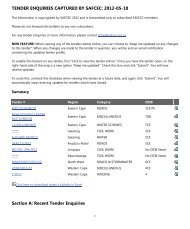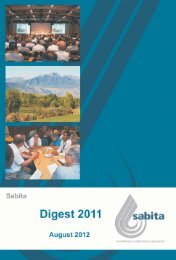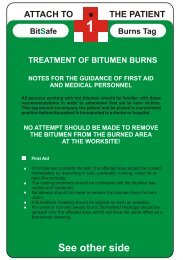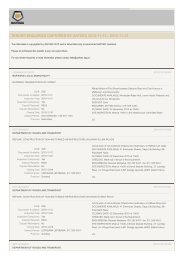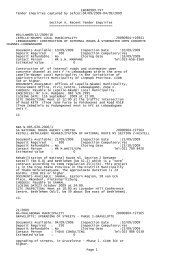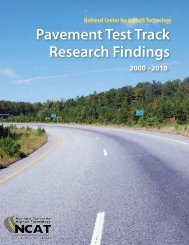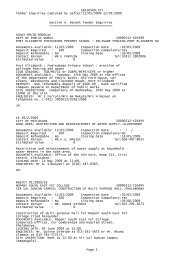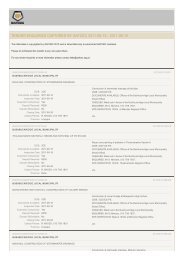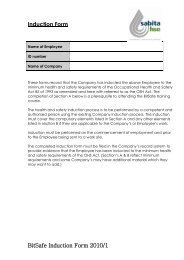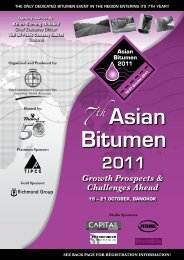DIGEST 2006 - Sabita
DIGEST 2006 - Sabita
DIGEST 2006 - Sabita
Create successful ePaper yourself
Turn your PDF publications into a flip-book with our unique Google optimized e-Paper software.
itumen emulsion or foamed<br />
bitumen, offers a feasible and cost<br />
effective solution to the problem of<br />
providing sustainable pavement<br />
design solutions. However, this<br />
challenge is not without obstacles,<br />
and most significant of these is the<br />
lack of sound and practical<br />
guidelines to the design and use of<br />
bitumen stabilised materials.<br />
Structured experience<br />
Inadequate guidelines have<br />
resulted mainly from the lack of<br />
structured and documented<br />
experience related to the design,<br />
use and performance of bitumen<br />
emulsion and foamed bitumen<br />
materials.<br />
To address these issues, <strong>Sabita</strong>, in<br />
conjunction with the Gauteng<br />
Department of Public Transport,<br />
Roads and Works (GPTRW),<br />
initiated a project to develop<br />
updated guidelines on the design<br />
and use of Bituminous Stabilised<br />
Materials (BSM).<br />
This initiative aims to incorporate<br />
both emulsion and foamed<br />
bitumen materials in a single BSM<br />
guideline to promote rational<br />
materials selection and equitable<br />
competition between the two<br />
material types. This guideline will<br />
update the technology presented<br />
in current guidelines for these<br />
materials (e.g. TG2 – Interim<br />
Technical Guidelines: The design<br />
and use of foamed bitumen<br />
treated materials, <strong>Sabita</strong> Manual<br />
14: GEMS – The design and use of<br />
granular emulsion mixes, and<br />
Manual 21: ETB – The design and<br />
use of emulsion treated bases.)<br />
The Project<br />
The project to develop a guideline<br />
for the design and use of<br />
bituminous stabilised materials<br />
was initiated in early 2005. At the<br />
outset, it was recognised that the<br />
structural design and mix design<br />
elements of the existing guidelines<br />
required the most urgent and<br />
significant improvements. The<br />
project was therefore structured to<br />
address these two aspects in a<br />
comprehensive manner. Owing to<br />
the ambitious scope of the project,<br />
it was structured to allow<br />
execution in distinct phases, as<br />
shown in Figure 2.<br />
The mix design element of the<br />
project is being undertaken by<br />
Professor Kim Jenkins of the<br />
University of Stellenbosch, while<br />
the Structural Design element is<br />
being handled by Drs. Fritz Jooste<br />
and Fenella Long of Modelling and<br />
Analysis Systems (MAS).<br />
As shown in Figure 2, the second<br />
phase of the project is currently in<br />
progress, and the bulk of this work<br />
is scheduled for completion in<br />
early 2008, at which time the<br />
compilation of the guidelines will<br />
begin.<br />
Mix Design Developments<br />
The mix design component of this<br />
study aims to identify the<br />
inadequacies in current<br />
approaches to foamed bitumen<br />
and bitumen emulsion mix design<br />
procedures, and to explore<br />
laboratory test protocols and<br />
available laboratory test data for<br />
these materials that would provide<br />
83



